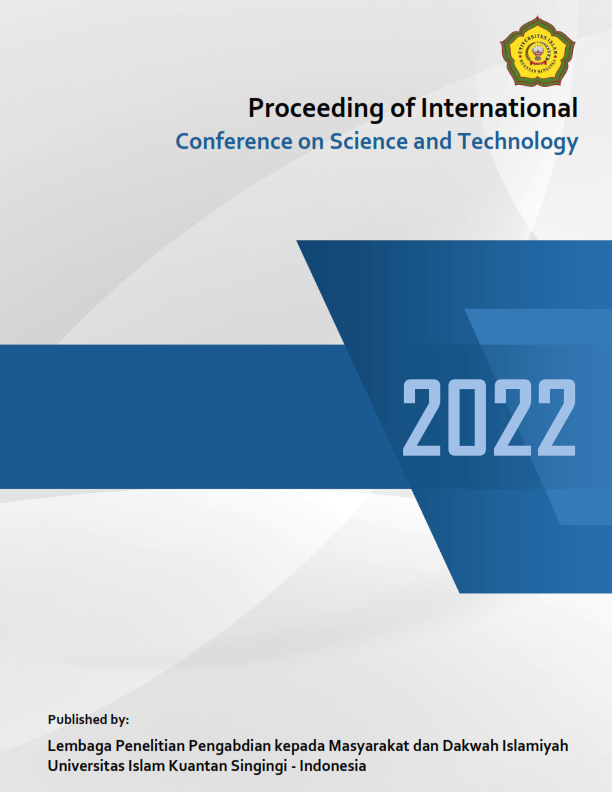Botanical Composition And Biomassa Production Of Forages In Sentajo Raya, Kuantan Singingi District Riau
Abstract
This study aims to determine the type of forage that grows in Kuantan Singingi District. The research began with a survey (field observation and location determination) and then forages sampling in 5 Village, namely koto sentajo, kampung baru, muaro, pulau komang, geringging. Each District was taken 5 locations, each location was taken 4 point. Then proceed with the identification of the type forage. The tools used for forage sampling consisted of a 0.5 x 0.5 m2 quadrant, grass clippers, sickle, plastic bag size 10 and size 2 kg, sack, plastic rope, and stationery. Calculation of forage by percentage of forage, Calculation of forage production with the average of each village. The results showed that there were 11 types of forage, consisting of grass, legumes and weeds. The conclusion of this study is that the The most dominant forage growing in Sentajo Raya Subdistrict is of the type of grass/gramineae 82.01%, namely, Bede Grass (Brachiaria decumbens) 5.62% and Leguminosae 13.07%. The highest forage biomass production in the geringging 59.17 tons/ha/year. The highest nutrient content is 10.8 crude protein in the Kampung Baru.
Downloads
References
Infitria and Khalil. 2014. Studi Produksi Dan kualitas Hijauan Dilahan Padang Rumput Upt peternakan Universitas Andalas. Bul. Makanan Ternak, vol. 101, no. 1, pp. 25–33,
Junaidi M and D. Sawen. 2010. KERAGAMAN BOTANIS DAN KAPASlTAS TAMPUNG PADANG PENGGEMBALAAN ALAMI KABUPATEN YAPEN. J. Ilmu Peternak. dan Vet. vol. 5, no. 2, ,
Mousavi.SA. Eskandari H. 2011. A general overview on intercropping and its advantages in sustainable agriculture. JAEB, vol. 11, no. 1, pp. 482–486,
Muhajirin, Despal, and Khalil. 2017. PEMENUHAN KEBUTUHAN NUTRIEN SAPI POTONG BIBIT YANG DIGEMBALAKAN DI PADANG MENGATA. Bul. Makanan Ternak. vol. 104, no. 1, pp. 9–20
Prawiradiputra B. 2003. Sistem Produksi Hijauan Pakan di Lahan Kering DAS Jratunseluna. Jitv, vol. 8, no. 3, pp. 189–195.
Prawiradiputra B. 2007. Gulma padang rumput yang merugikan. Wartazoa, vol. 17, no. 2, pp. 46–57,
Putra RK, H. P. Nastiti, and Y. H. Manggol. 2018. Komposisi Botani Dan Produksi Hijauan Makanan Ternak Padang Penggembalaan Alam Di Desa Letneo Kecamatan Insana Kabupaten TTU. Nukl. Peternak., vol. 5, no. 1, pp. 42–48.
SIBA, SF. N. SURYANA. 2017. EVALUASI PADANG PENGGEMBALAAN ALAMI MARONGGELA DI KABUPATEN NGADA PROVINSI NUSA TENGGARA TIMUR. Majalah Ilmiah Peternakan. vol. 20, no. 1, pp. 1–4,
Tana, H. P. Nastiti, and S. T. Temu. 2015. Komposisi Botani dan Produksi Hijauan Makanan Ternak Musim Hujan pada Padang Penggembalaan Alam Desa Oesao, Kecamatan Kupang Timur Kabupaten Kupang. J. Nukl. Peternak., vol. 2, no. 2, pp. 144–151,
Umami N. ellentik. Damayanti. 2016. POTENSI DAN PRODUKSI HIJAUAN PAKAN TERNAK DI LAHAN PERTANIAN BANYUSOCO, PLAYEN, GUNUNG KIDUL P. prosisding Simp. Nas. dan Pengemb. Peternak., vol. 53, pp. 82–87,
Hawolambani YU, Herayanti PN, yoakim HM. 2015. PRODUKSI HIJAUAN MAKANAN TERNAK DAN KOMPOSISI BOTANI PADANG PENGGEMBALAAN ALAM PADA MUSIM HUJAN DI KECAMATAN AMARASI BARAT KABUPATEN KUPANG. J Nukleus Peternakan. vol. 2, no. 1, pp. 59–65.
Copyright (c) 2022 Infitria Infitria, Pajri Anwar, Jiyanto Jiyanto

This work is licensed under a Creative Commons Attribution 4.0 International License.


